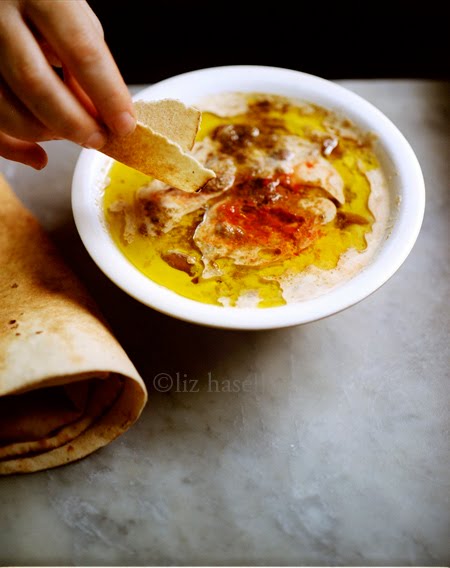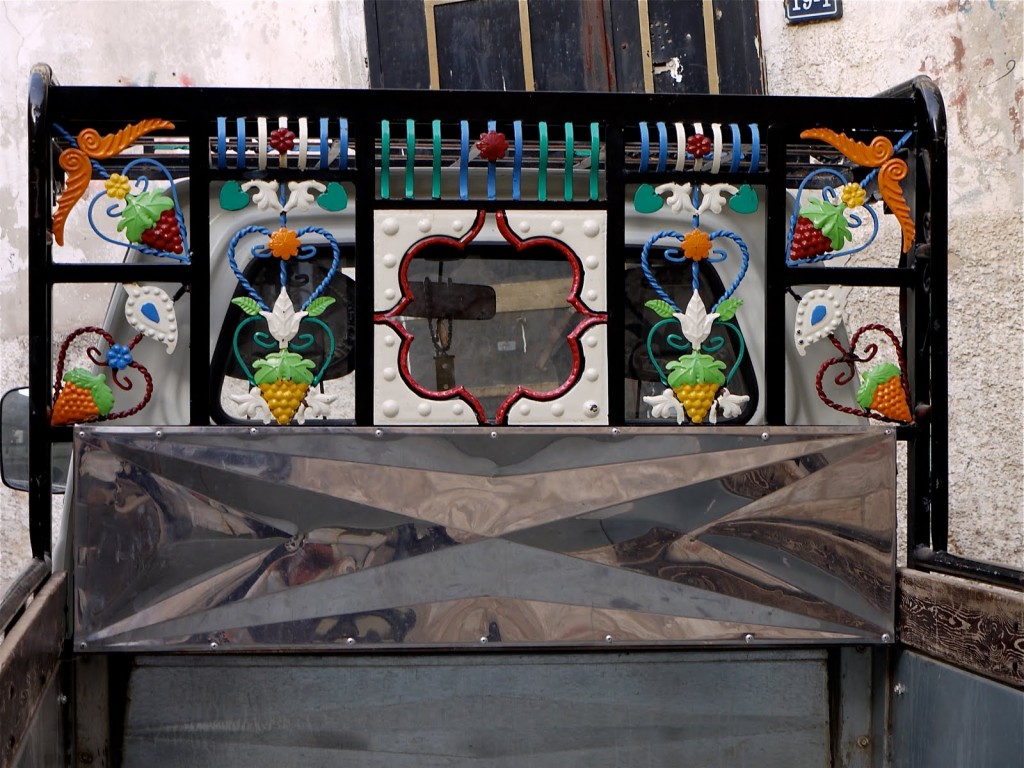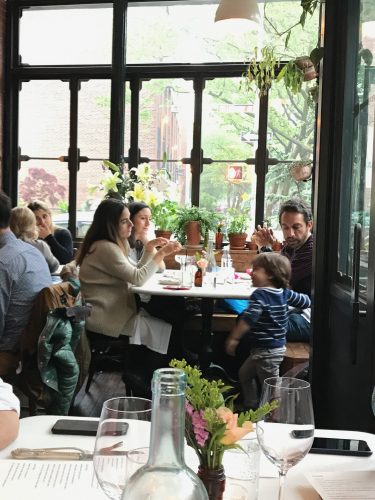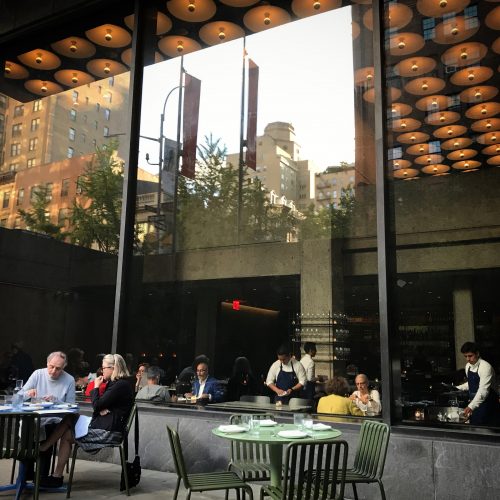
Just as Syria is a cradle of human culture, its cuisine impressed me as a star of world gastronomy along with Chinese, French or Italian gastronomy.
As with any complex gastronomy, there is no single Syrian cuisine but rather a mosaic of regional cuisines produced, and responding to, the geographic position, the soil, the climate and the culture that produce them. They are all delicious.
The Syrian Academy of Gastronomy describes their cuisines thus: “…all of these cuisines have a very important denominator — the freshness of their ingredients. In fact, in Syria, growing vegetables has remained individual and seasonal…The freshness of these vegetables determines their taste and flavor. The meat, especially lamb, is tender and its taste is delicious because the livestock pasture in open air and eat exclusively natural grass without chemical products. The fruits of the season are delicious (sour cherry “washna”, apricot of Damascus, pistachio of Aleppo) and spices, like thyme, sumac, cumin and paprika paste, season the most delicious plates (remember that Aleppo was on the silk and spice route).”
We started our day with a breakfast spread that included fresh yoghurt and cheeses, flat bread fresh from the oven, fresh, sweet orange juice and then the jams. It is the jams and the preserved and dried fruits that astound…wild cherry, apricot, flower jam, stawberry and whatever else is in season. They are artisanal and, made without sugar, can be eaten by the spoonful.
Lunches vary in quantity and ingredients as I quickly noticed on the few occasions we stopped at a restaurant. Syrians seemingly eat in healthy quantities as their generous figures attest. Our lunches were the composed of the classic salads – tabouleh, fatoush, rocket, eggplant, grilled vegetables, grilled cheeses – with a soup to round it out. Meals always finish with the delicious sweets – pistachio filled cookies and fruits, honey soaked biscuits, baklava with cherries.
At dinner, meats share the table with the mezze, tiny dishes of salads and dips that compose the appetizers. Syrian plates like meatballs with sour cherries, a stew of quinces with kebbe (meat skewers), dishes with hot yoghurt, tender lamb with sauces, raw lamb dishes, brazier-grilled chicken, delicious french fries dipped in a garlic, butter, vinegar sauce and, of course, delicious vegetables. Syria is a vegetarian’s delight.
It is possible to take a cooking class in Aleppo or Damascus while traveling the country or, if impassioned to explore Syrian cuisine, its street food as well as its gastronomic fare, you cannot do better than to join Anissa Helou, the famous chef and cookbook writer who hails from the region, on one of her personally led trips.

www.anissas.com/blog
Top photo courtesy of Anissa Helou blog
www.gastrosyr.com
 Metta, Norberto Piattoni's Fort Green neighborhood restaurant[/caption]
Francis Mallmann, the revered Argentinian chef made famous by his many restaurants around the world, a couple of books on his cooking style and a hit television series, Chef's Table, has ensured his legacy with a diaspora of chef proteges, two of whom have rolled up in New York. Norberto, better known to his friends as Negro, recently opened Metta, a neighborhood restaurant located on a quiet corner two blocks from the Fort Greene farmers market in Brooklyn. It offers sustainably sourced, vegetable-forward dishes all cooked in a custom designed, open-fire kitchen, using South American asado techniques, utilizing all aspects of the fire (smoke, flame, ash and embers) to create layers of flavor in dishes. Packed with happy diners the night I went, it is relaxed, delicious, interesting and fun.
[caption id="attachment_8248" align="alignnone" width="500"]
Metta, Norberto Piattoni's Fort Green neighborhood restaurant[/caption]
Francis Mallmann, the revered Argentinian chef made famous by his many restaurants around the world, a couple of books on his cooking style and a hit television series, Chef's Table, has ensured his legacy with a diaspora of chef proteges, two of whom have rolled up in New York. Norberto, better known to his friends as Negro, recently opened Metta, a neighborhood restaurant located on a quiet corner two blocks from the Fort Greene farmers market in Brooklyn. It offers sustainably sourced, vegetable-forward dishes all cooked in a custom designed, open-fire kitchen, using South American asado techniques, utilizing all aspects of the fire (smoke, flame, ash and embers) to create layers of flavor in dishes. Packed with happy diners the night I went, it is relaxed, delicious, interesting and fun.
[caption id="attachment_8248" align="alignnone" width="500"] Flora Bar, Ignacio Mattos' third opening in New York[/caption]
Ignacio Mattos was born in Uruguay and learned to cook in the kitchens of Mallman and Slow Food legend, Alice Waters. His two other restaurants in New York, Estela, with its bold, Mediterranean-inspired cooking, and Altro Paradiso, with its Italian cuisine, are favorites of mine. Now, Ignacio has come with his team to the Met Brauer on 76th and Madison, offering small bites as well as main dishes in a comfortable setting either indoors or on the open terrace. Service is superb, wines delicious and the food captivating. The space, in my opinion, could do with some tlc - easily accomplished. If you can serve food like that, a bit of flower planting and decorating should come easy.
"
["post_title"]=>
string(21) "The Mallmann Diaspora"
["post_excerpt"]=>
string(0) ""
["post_status"]=>
string(7) "publish"
["comment_status"]=>
string(4) "open"
["ping_status"]=>
string(4) "open"
["post_password"]=>
string(0) ""
["post_name"]=>
string(21) "the-mallmann-diaspora"
["to_ping"]=>
string(0) ""
["pinged"]=>
string(0) ""
["post_modified"]=>
string(19) "2017-05-30 11:34:14"
["post_modified_gmt"]=>
string(19) "2017-05-30 15:34:14"
["post_content_filtered"]=>
string(0) ""
["post_parent"]=>
int(0)
["guid"]=>
string(31) "http://lisalindblad.com/?p=8253"
["menu_order"]=>
int(0)
["post_type"]=>
string(4) "post"
["post_mime_type"]=>
string(0) ""
["comment_count"]=>
string(1) "0"
["filter"]=>
string(3) "raw"
}
}
Flora Bar, Ignacio Mattos' third opening in New York[/caption]
Ignacio Mattos was born in Uruguay and learned to cook in the kitchens of Mallman and Slow Food legend, Alice Waters. His two other restaurants in New York, Estela, with its bold, Mediterranean-inspired cooking, and Altro Paradiso, with its Italian cuisine, are favorites of mine. Now, Ignacio has come with his team to the Met Brauer on 76th and Madison, offering small bites as well as main dishes in a comfortable setting either indoors or on the open terrace. Service is superb, wines delicious and the food captivating. The space, in my opinion, could do with some tlc - easily accomplished. If you can serve food like that, a bit of flower planting and decorating should come easy.
"
["post_title"]=>
string(21) "The Mallmann Diaspora"
["post_excerpt"]=>
string(0) ""
["post_status"]=>
string(7) "publish"
["comment_status"]=>
string(4) "open"
["ping_status"]=>
string(4) "open"
["post_password"]=>
string(0) ""
["post_name"]=>
string(21) "the-mallmann-diaspora"
["to_ping"]=>
string(0) ""
["pinged"]=>
string(0) ""
["post_modified"]=>
string(19) "2017-05-30 11:34:14"
["post_modified_gmt"]=>
string(19) "2017-05-30 15:34:14"
["post_content_filtered"]=>
string(0) ""
["post_parent"]=>
int(0)
["guid"]=>
string(31) "http://lisalindblad.com/?p=8253"
["menu_order"]=>
int(0)
["post_type"]=>
string(4) "post"
["post_mime_type"]=>
string(0) ""
["comment_count"]=>
string(1) "0"
["filter"]=>
string(3) "raw"
}
}